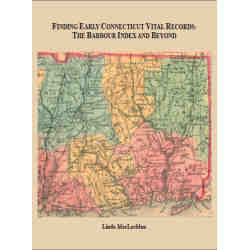
In Chapter 21 of The Researcher’s Guide to American Genealogy. Fourth Edition, author Val Greenwood cautions genealogists that during ‘pick and shovel research’–when the documents we need are not online and we must go to them in person—we will be glad we know how to abstract those records. At the outset of the chapter, the author explains the difference between “extract (to take something out of another source in its entirety) and “abstract (to summarize, or take essential thoughts only). When we are unable to photograph the image of a document (extract), it becomes crucial to know how to abstract well in order to save time and to capture all the pertinent information in the original. In the following illustration drawn from Chapter 21, we provide Mr. Greenwood’s valuable rules for abstracting probate documents (wills, etc.) as well as a sample will and the abstract the author has made from it.
Abstracting probate records:
As you abstract probate records, there are nine items to consider in addition to the type of document, source, locality references, and essential dates. These are as follows:
- The name of the testator—the person who made the will.
- Any additional descriptive information relating to the testator—such as place of residence, occupation, religion, inferences of age or state of health, etc.
- All persons named in the will should be listed exactly as their names appear in the record, in the order named, and in direct connection with . . .
- Any relationships stated for those persons to either the testator, to some other person(s), or to each other, and . , .
- The essentials of the bequests and devises made to these persons. (This should include land descriptions, names of slaves, amounts of money, and all other property mentioned.)
- Miscellaneous information. (Again, this is a difficult category to define because wills are just as unpredictable as deeds. Usually, however, any special explanations, restrictions, or privileges might fall into this category.)
- The name(s) of the executor(s) and any relationships or connections that are stated between him (them) and the testator.
- The names of witnesses—exactly as they appear.
- The signature of the testator. (As with deeds, it is often useful to know whether a man signed his name or made his mark This evidence may help provide evidence of a connection sometime. And though the wills in the early registers are not the originals and do not show original signatures, they do indicate if a mark was used, and the scribe often imitated marks from the original documents.)
Now that we have discussed the essentials of abstracting deeds and wills, let us look at some actual documents and abstracts of them.
Verbatim Will Example:
WILLS OF GUILFORD COUNTY, NORTH CAROLINA—BOOK A (1771-1813), PAGE 224.
This first day of February in the year of our Lord one thousand eight hundred and fourteen I Robert Lamb of the State of North Carolina and County of Guilford: being sound in health of bodday minde and memmory do make this my last will and testament at the same time revoking all former wills made by me, declaring this to be my last will & Testament.
Firstly—I give and bequeath unto my three sons namely Samuel, Simeon and John Lam all the lands that I have previously put them in possession of together with there stock and every spicice of property that I have heretofore given them.
I also give and bequeath unto my four daughters and my grand daughter namely Elizabeth White Deborah Hoggatt Ester Hodson Ann Reynolds Margate Balilen each and every of them the whole property which I have heretofour given them.
I allso give and bequeath unto my beloved wife all my household furniture together with all the live stock which I am now in possession of the same to be subject to hir use and benefit during hir natureal life and at hir death the same to be devided eaqually between my three sons my four daughters and my grand daughter as above named—and lastly after my just debts are paid I give and bequeath all the rezidue of all my estate what eaver and whearever to my eight children as above named equally devided between them and at the same time. I appoint my friend Zino Worth and do impower him to act as the Executor of this my last will and Testament to which I have hereunto set my hand and affixed my seal the day and date above mentioned.
Daniel Worth (Jurat)
Benjamin Hall Robert X (his mark) Lamb
Abstract of Same Will:
WILLS OF GUILFORD CO, N.C.—BK A (1771-1813) p. 224.
WILL OF ROBERT LAMB of Guilf. Co—in good health.
To my 3 SONS SAMUEL, SIMEON & JOHN LAM—all lands and property I have previously given them.
To my 4 DAUS AND MY G DAU ELIZABETH WHITE, DEBORAH HOGGA’IT, ESTER HODSON, ANN REYNOLDS, MARGATE BALILEN—property I have heretofore given them. To my BELOVED WIFE (NOT NAMED) all household furniture and livestock now in my possession, during her natural life—at her death to be divided among my 3 SONS, 4 DAUS, AND G DAU.
All residue to my 8 CHN. above named, equally.
Exor: My FRIEND ZINO WORTH
Witness: DANIEL WORTH, BENJAMIN HALL. (signed) ROBERT X (his mark) LAMB.
Dated: 1 Feb 1814—No date of probate given (“FOR PROBATE, ETC., SEE MINUTE DOCKET #4, p. 409”)
Author’s note: Notice that the above will suggests the use of another record. It would be a serious mistake if we failed to look up the court record (minute docket) where the information relating to the probate of this will is recorded.





